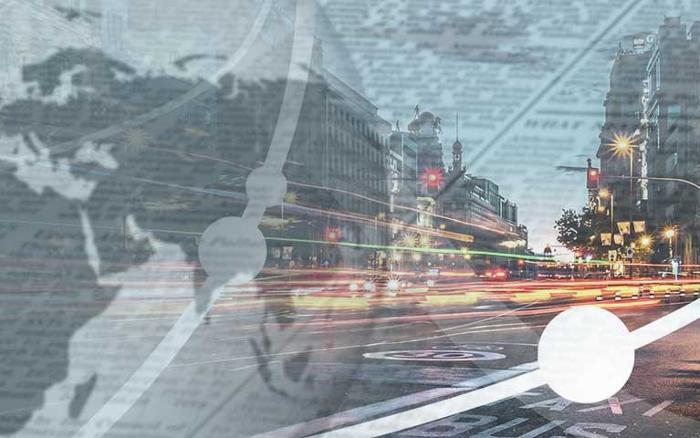

Advantages and disadvantages of public transport

Making efficient use of public transport on a daily basis can improve urban mobility in your town or city. This article looks at both its advantages and disadvantages.
New urban models for the development of large cities revolve around plans for sustainable urban mobility that promote green, inclusive and increasingly cleaner transportation.
This is our future over the short term, as shown by the European Union with its Next Generation plans. These plans don’t just offer economic stimulus but also aim to transform our economies and societies with a view to reducing the environmental impact of human development.
The European Green Deal aims to make Europe the first climate-neutral continent by 2050. This means that it will not produce more greenhouse gases than our ecosystems can naturally absorb. This entails a broad scenario for action that stems from clean technology, as well as appropriate ecological and sustainable mobility and socially responsible cities.
If we combine these factors within the context of a city, we can see that one of the key elements is the use of public transport. So, we need to consider how it functions, what advantages it has, how it can be promoted, and also what problems its use can cause in terms of competition with private transport and how it can become the main mobility option in a city.
Global Mobility Call will offer a space in which to address and reach strategic agreements on how to make progress in the area of sustainable mobility and build a society better aligned with all the European Union’s goals, working toward making efficient cities a feasible reality in the near future.
In this context, public transport is an essential factor in achieving these goals in all cities. Public transport has undergone many changes over the last hundred years, both in terms of the different services available and their power sources. There are buses powered by natural gas, rail and metro services running on renewable energy and hybrid powered discretionary transport services.
All of this works together toward achieving sustainable cities. But, while this modality has some big advantages, it also has a few minor disadvantages. This article will break them down.
Advantages of public transport
There are different factors that make public transport one of the best options for getting around in the city.
Taking care of the environment
One of the environmental benefits of public transport is its low level of pollution. As we talked about above, the vast majority are powered by alternative energy sources that emit less or no greenhouse gases compared with conventional fuels. So, it provides a socially responsible option.
Price
This is a key factor which directly affects users’ pockets. Using public transport is considerably cheaper than using private transport.
As an example, a single ticket for the Madrid metro costs between €1.50 and €2. With it, you can travel all the way from one side of the city to the other. This price competitiveness is one of the biggest factors driving its use.
Time and simplicity
In big cities, traffic jams and hold-ups are a common problem for private transport. If you use public transport to get around, this happens less. Railway and underground trains aren’t affected by these delays and their punctuality is one of their big strengths. In the case of buses, which have to use the roads, there are special lanes set aside for them that make journeys easier and prevent major delays.
Also in their favour is their simplicity of use. A metro system can get you to your destination in a few easy stages. Plus, you don’t need to waste time trying to find a place to park on your arrival.
Disadvantages of public transport
While we’ve talked about the many benefits offered by this mode of mobility, we also have to acknowledge that it does have a few drawbacks.
Independence
A private car allows you a degree of independence that public transport can’t offer. While public transport often has very good timetables, it won’t be the same as using your own vehicle. Having to follow a timetable can sometimes be a nuisance and force you to change your travel plans.
A good example of this is night-time transport. Many lines stop working late at night due to low demand, and this can complicate travel during this time period.
Waiting times and timetables
When using public transport, your watch will be your friend. You need to know the timetable and journey time for the bus to make sure that you arrive on time. If you miss your bus and get the next one, you might be late.
This means that journeys are dependent on the timetable, and it’s possible that the frequency of stops doesn’t match your time commitments. So, it’s important to always plan your routes.




